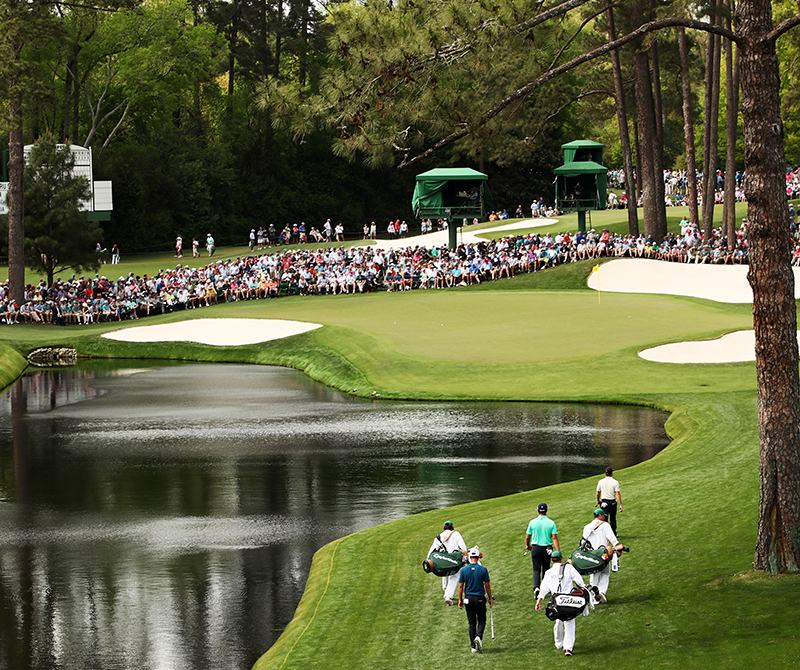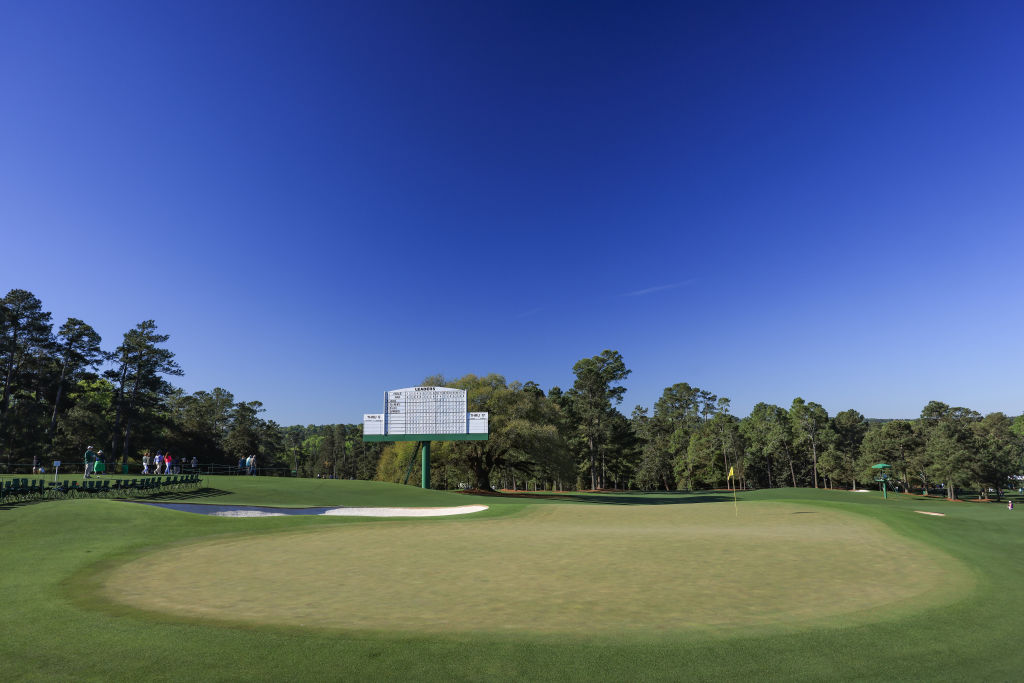I Know It's Controversial, But The Last Three Holes At Augusta National Need A Rethink
Augusta National is arguably the best golf course on the planet, but I find the last three holes at the home of The Masters slightly underwhelming...


At this point, everyone is intimately familiar with the holes at Augusta National. After all, the course has staged The Masters 87 times and hosted every one since Horton Smith’s triumph back in 1934.
Few would dispute it’s one of the great golf courses in the world. In fact, ask 100 golfers which course they’d most like to play and I’d suggest more than 50 would answer Augusta National. I would be one of them.
The reasons for that are obvious – it’s an absolutely pristine golfing haven complete with truly memorable holes, incredible tradition and a mystique that few, if any, courses on planet golf can match.
That said, there’s no such thing as perfection. For the last few years, I’ve been unable to shake the thought that the last three holes let Augusta down slightly (see our Augusta hole-by-hole guide).
Everything is relative, of course, and clearly they aren’t bad golf holes. I just don’t think they hit the heights of the rest of the layout – and certainly not the rest of the back nine. If holes 10-15 weren’t so spectacular, I’d suggest switching the nines. For me, holes 7-9 would make for a better finish.
Perhaps it’s just a case of overfamiliarity, or maybe it’s because the six holes that precede the final trio are jaw-droppingly good, but I struggle to get excited about the closing stretch.
I’m sure there are people out there who vehemently disagree with me, and that’s fine. I understand why people love the 16th, for example (although I do feel most golf fans would have the 17th bottom or close to bottom in their list of Augusta hole rankings). Here’s why I feel the last three holes are slightly underwhelming…
Subscribe to the Golf Monthly newsletter to stay up to date with all the latest tour news, equipment news, reviews, head-to-heads and buyer’s guides from our team of experienced experts.

You have to hit a terrible shot to find the water at 16
16th
On the 16th, my issue is perhaps more with the pin positions employed by the tournament organisers than the hole itself (I have a similar gripe on 18 – more on that later). My main contention is the hole is simply too straightforward with Sunday’s pin.
I don’t think hitting an 8- or 9-iron into a 40-foot zone offers enough jeopardy for the third-last hole in the final round of a Major. Yes, the hole looks nice, but the water rarely comes into play and Redbud’s modest length, coupled with a slope that feeds the ball down to the hole, make it too easy for me.
The only times I can remember contenders finding the pond on 16 are Greg Norman in 1996 and Xander Schauffele in 2021.
So many balls end up 20 feet short of the pin and I don’t feel players have to work hard enough for a makeable birdie putt. My unpopular opinion is that 16 would be a far better hole without a slope bisecting the green.
I’d much prefer to see the Sunday pin back right, too. People will say this eliminates the drama of a potential hole-in-one, but I don’t really care about that. I can’t remember anyone making a tournament-defining or tournament-impacting ace on 16.
If you’re chasing the lead, can you hit a mid/short-iron to a tiny shelf? If you can, a two would gain you so much more ground on the field.
You could argue it makes it too easy for a leader to find the flat portion of the green and safely two-putt, but as we’ve seen countless times before, it’s by no means a guaranteed two-putt from the lower level. Often, first efforts are left a long way short coming up the hill.
Historically, the 16th is the 11th hardest hole at Augusta and that’s with the tricky front-right and back-right pins factored in. When the pin is low and left, it doesn’t present a challenge befitting the hole’s position on the scorecard.
17th
In my view, the 17th is the worst hole on the course and one of the most forgettable in Major Championship golf. There’s no way it should be the penultimate hole at arguably the best tournament of the year.
Apart from a run-off area front right of the green, it doesn’t really have any stand-out features. Plus, it’s almost a carbon copy of the 14th – the only real difference is the two greenside bunkers.
You also don’t tend to see too many spectators lining the hole and surrounding the green, which means the atmosphere and tension are not what they should be given how high the stakes are.
There are so many epic 17th hole in Major Championship golf and the 17th at Augusta falls well short of that mark.

The 18th hole at Augusta without fans
Quiz: can you name the golfers with the most Masters wins?
18th
Of the closing trio, the 18th is my favourite – well, the tee shot at least. You have to thread the needle with your drive and it asks serious questions of your mettle if you need a par to win or a birdie to force a play-off – it’s do or die.
Anything over-faded will find trees or the right rough and be blocked out, while anything pulled will clatter into the trees – as happened to Jon Rahm during last year’s final round – or trundle into the fairway bunkers.
From the fairway, the uphill second shot isn’t the most thrilling and again I have an issue with the traditional Sunday pin position. With the backstop beyond the front-middle flag, it doesn’t take a particularly special shot to get close. Even if you’re slightly off line with your approach, you will often still have a flat 25-footer for birdie.
Again, modern players tend to come into this green with no more than 7-iron. I’d have no issue with the backstop if players were hitting their approaches from 200+ yards, but it seems too much of a helping hand in the age of power hitting.
I’d much prefer the final-round flag to sit on the back shelf behind the bunker, as it often does in rounds two and three. If players are chasing birdies, they’d be forced to take it on; if you’re sitting on the lead and choose to play conservatively, good luck two-putting from 60 feet to take the title.
In my view, the final-round flags on 16 and 18 should be in harder positions. Augusta’s back nine yields plenty of birdies, so making players really work for par or hit hero shots for potentially tournament-clinching birdies would add another dimension to the final round.
Changing the pin positions on 16 and 18 would be sufficient, but I do feel the 17th needs a major rethink. When you go back to the same golf course every year, the penultimate hole has to offer more.

Nick Bonfield joined Golf Monthly in 2012 after graduating from Exeter University and earning an NCTJ-accredited journalism diploma from News Associates in Wimbledon. He is responsible for managing production of the magazine, sub-editing, writing, commissioning and coordinating all features across print and online. Most of his online work is opinion-based and typically centres around the Majors and significant events in the global golfing calendar. Nick has been an avid golf fan since the age of ten and became obsessed with the professional game after watching Mike Weir and Shaun Micheel win The Masters and PGA Championship respectively in 2003. In his time with Golf Monthly, he's interviewed the likes of Rory McIlroy, Justin Rose, Jose Maria Olazabal, Henrik Stenson, Padraig Harrington, Lee Westwood and Billy Horschel and has ghost-written columns for Westwood, Wayne Riley, Matthew Southgate, Chris Wood and Eddie Pepperell. Nick is a 12-handicap golfer and his favourite courses include Old Head, Sunningdale New, Penha Longha, Valderrama and Bearwood Lakes. If you have a feature pitch for Nick, please email nick.bonfield@futurenet.com with 'Pitch' in the subject line. Nick is currently playing: Driver: TaylorMade M1 Fairway wood: TaylorMade RBZ Stage 2 Hybrid: Ping Crossover Irons (4-9): Nike Vapor Speed Wedges: Cleveland CBX Full Face, 56˚, Titleist Vokey SM4, 60˚ Putter: testing in progress! Ball: TaylorMade TP5x
You must confirm your public display name before commenting
Please logout and then login again, you will then be prompted to enter your display name.